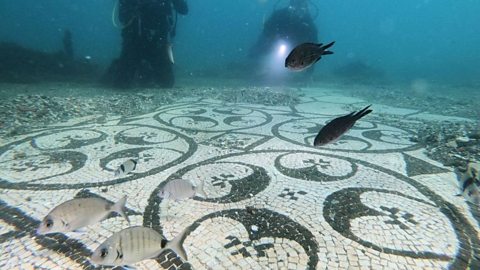When you think of the most naturally colourful places in the world, images of snow-capped peaks, bright blue oceans or the magical hues of the Northern Lights may come to mind.
But what about rainbow coloured mountains or blood-red lakes?
┤¾¤¾┤½├¢ Bitesize takes a look at some of the most incredible colourful places on Earth.
Vinicunca Mountain, Peru
In the Peruvian Andes, to the south-east of the city of Cusco, stands one of the most unique mountains in the world.
Vinicunca is 5,200m (17,100 ft) above sea level and its name, in the indigenous Quechua language, means ÔÇÿcoloured mountainÔÇÖ ÔÇô but itÔÇÖs more commonly known as the Rainbow Mountain.
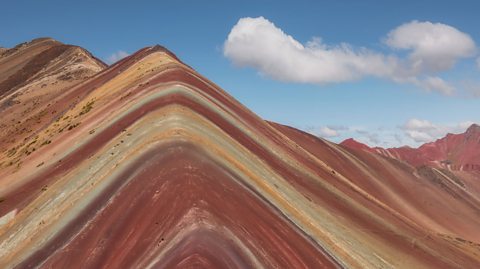
ItÔÇÖs easy to see where the name comes from. The mountainÔÇÖs vivid colours were created by The breaking down or dissolving of rocks and minerals on Earth's surface. , local environmental conditions and sedimentary deposits of minerals throughout the area over time. These factors combined to create a unique marbling-style effect with shades of gold, red and turquoise, among others.
While the mountain is incredibly popular among tourists today ÔÇô around 1,500 people make the trek up the mountain each day ÔÇô itÔÇÖs a relatively new phenomenon. Until 2015, it was covered in snow, meaning its natural beauty was only revealed once the ice melted.
Waitomo Caves, New Zealand
On New ZealandÔÇÖs North Island, around 200km (124.27 miles) south of Auckland, is the community of Waitomo.
Waitomo ÔÇô the name of which comes from the Maori ÔÇÿwaiÔÇÖ, meaning water and ÔÇÿtomoÔÇÖ, meaning hole ÔÇô is home to one of New ZealandÔÇÖs most stunning attractions.
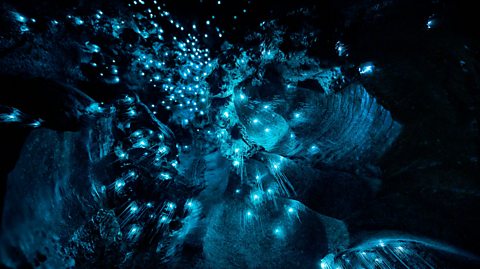
Underneath green hills is a labyrinth of caves and underground rivers, some of which were formed over 30 million years ago. TheyÔÇÖre home to a species of glowworm unique to New Zealand, which produce an incredible blue light.
Tourists can go on a boat ride through the caves, which are exclusively lit up by the glowworms, creating a magical starlight-style display.
Antelope Canyon, United States
In northern Arizona in the United States, in the Navajo Nation (the largest Native American reservation in the country), is Antelope Canyon.
The canyon is the product of millions of years of water erosion ÔÇô the Navajo name for the upper part of the canyon is Tse' bighanilini, which means ÔÇÿthe place where water runs through the rocksÔÇÖ.
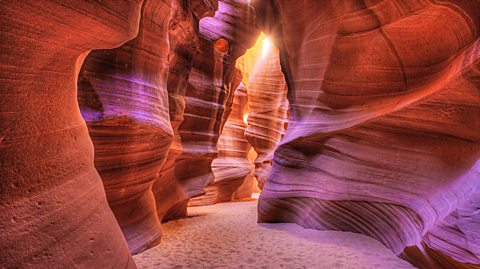
ItÔÇÖs that process that has carved out a wave-like structure ÔÇô and that combined with sunlight that beams down on the canyon, has produced a natural marbling of warm colours.
Visitors ÔÇô limited to 20 per day to preserve the site ÔÇô can see orange, red, yellow and purple hues on the sandstone walls.
Mu Cang Chai Rice Field Terraces, Vietnam
When you think of the colour emerald, you might imagine Ireland or perhaps the Wizard of Oz.
But perhaps the most vivid display of this shade of green can be seen in northern Vietnam.
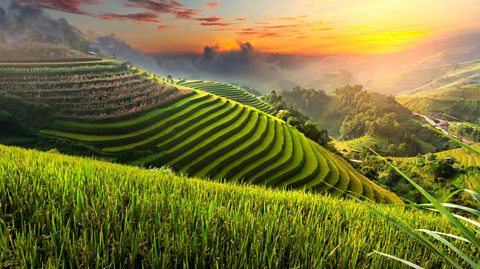
The Mu Cang Chai Rice Field Terraces, to the north-west of the capital Hanoi, cover 2,200 hectares (22 sq km) of land. In the centre and south of the country, which were more prone to flooding, rice was grown in paddies on water-logged flat land.
But further north, this wasnÔÇÖt possible. Hill tribes needed to grow rice vertically, so produced the terraces in the 15th Century which remain to this day.
During the harvest period in autumn, the fields take on a yellowish hue, but in spring and summer, the grass is the most brilliant green, almost looking neon at times.
Lake Natron, Tanzania
In northern Tanzania, close to the border with Kenya, is a lake like almost no other.
Lake Natron is 56km long (34.8 miles) and 24km wide (14.91 miles) with a depth of just 3m (9.84ft) ÔÇô but its water is unusually bright red.
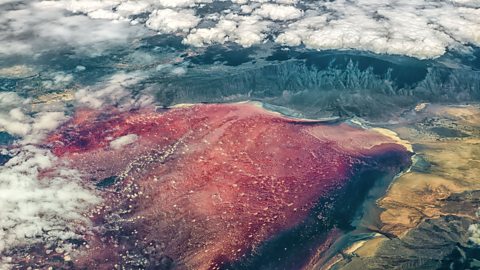
Lake Natron is a salt lake, meaning water gets in, but can only leave by evaporation, producing extremely high salt levels. In NatronÔÇÖs case, the water leached into the lake from a nearby volcano, making it extremely Able to burn or corrode organic tissue through a chemical action., with alkaline levels to rival ammonia.
That makes the lake quite toxic which, combined with its high temperatures of up to 60 ┬░C, makes it inhospitable for humans and most animals. However, itÔÇÖs become a popular area for flamingos, who arenÔÇÖt affected by the deadly, hot waters.
Pamukkale Thermal Pools, Turkey
It looks like something out of Frozen, but the water at Pamukkale Thermal Pools is anything but icy cold.
Pamukkale ÔÇô which means cotton castle ÔÇô is in south-west Turkey. The site looks like a winter-themed man-made spa, but the pools formed naturally.
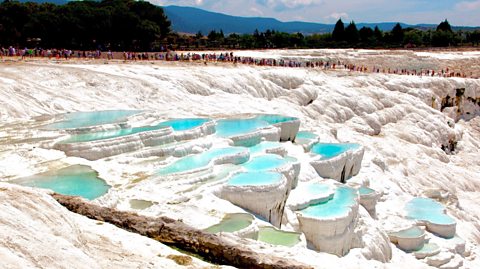
The waters in the area were laden with calcite ÔÇô a carbonate mineral and the most common form of natural calcium carbonate. The amount of calcite in the 17 hot springs shaped the limestone cliffs, giving them a snow-white appearance, which is where the cotton castle name comes from.
The water ranges from 35 ┬░C to 100 ┬░C and locals believe it has healing properties ÔÇô but some restrictions have been put in place on going into the water in order to preserve the site.
This article was published in December 2021.

Five natural geological wonders from across the world
The foundation of the Earth has created some beautiful landscapes - here are some of them.
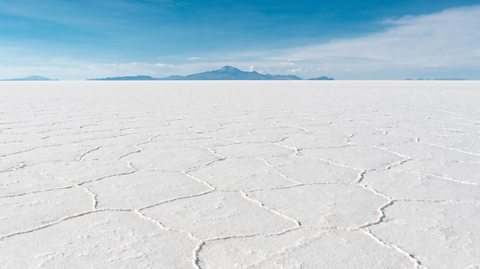
Five places you didnÔÇÖt know were on UNESCOÔÇÖs World Heritage Site list
Aqueducts, remote islands and Industrial Revolution sites in the UK all feature on the list.

Looking for Atlantis? Five underwater cities from around the world
Dive below the surface and explore these incredible submerged communities.
